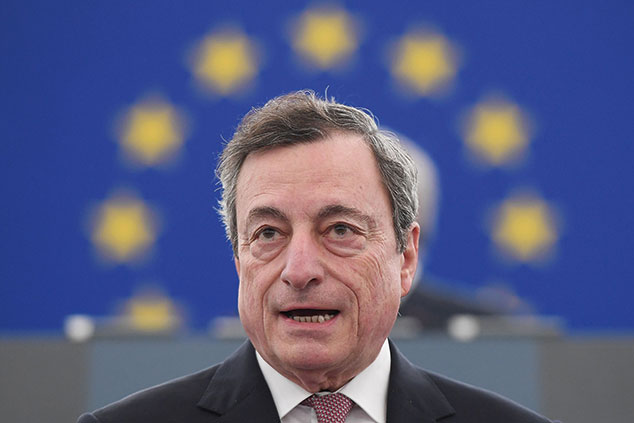
“Whatever it takes”
In July 2012, borrowing costs for Greece, Italy and Spain were spiking and the single currency was on the verge of being ripped apart. Draghi vowed to do “whatever it takes” to defend the euro. Cowed by the ECB’s display of resolve, markets backed off. That burnished Draghi’s reputation as “the most effective monetary policymaker of his generation”, says French. Since 2013, unemployment in the eurozone has fallen by 11 million to a ten-year low. A Eurobarometer survey shows about three-quarters of eurozone citizens now support the single currency, the highest level ever.
The great paradox is that “Super-Mario” saved the euro yet failed in his only official mission, says Pierre Briançon on MarketWatch. The ECB is meant to keep annual inflation “below but close to 2%”. The bank has missed that target every year since 2013, with eurozone inflation coming in at just 0.8% in September. And for all the plaudits, Draghi leaves the ECB on a “sour note”, says Tom Fairless in The Wall Street Journal. A decision in September to cut a key interest rate to -0.5% and restart quantitative easing has opened up deep divisions.
Officials from northern countries question the effectiveness of more easing and point out that at this rate the bank will run out of eurozone bonds to buy by the end of 2020. The ECB will then either have to break its own “self-appointed limit of buying no more than a third of outstanding bonds” or turn to buying assets such as “bank bonds and equities”. Negative rates are also unpopular: German tabloid Bild once labelled Draghi as “Count Draghila”, the vampire sucking the German saver dry.
Don’t fight Frankfurt
Markets rose when Lagarde’s appointment was announced this summer, notes Martin Arnold in the Financial Times, as investors bet on continuity with the Draghi era. Yet with global growth tanking, Lagarde’s ECB faces “daunting challenges”. Banks and insurers “complain bitterly about the corrosive impact of negative interest rates” on profits. Economists fret that the “cheap flow of money” could inflate housing bubbles and prop up zombie businesses that deserve to go under. One of Lagarde’s key tasks will not be to adjust monetary levers, but to persuade tight-fisted governments in northern Europe, chiefly Germany, to step in with fiscal stimulus.
The “stunning phenomenon of negative rates” has yet to boost eurozone stocks, says John Authers on Bloomberg. The region’s markets have underperformed “spectacularly” during Draghi’s tenure. That leaves them looking cheap on a relative basis. “Perhaps the best that can be said of the Draghi legacy for equity investors is that he might have created an almighty long-term buying opportunity.”